By Eric Vandenbroeck and co-workers
Göbekli Tepe revisited part one
The project of which this multi-part
article is the result started during the first weeks in 2007 when it became
clear that something about human societies has changed that previously had
not been explained. Or as Raymond C. Kelly pointed out in “Warless
Societies and the Origin of War” (2000), based on a logical principle
that’s by no means natural or self-evident, which states that significant
violence involves two teams, and any member of one team treats all members of
the other as equal targets. Kelly calls this the principle of ‘social
substitutability’ whereby one crucial factor would seem to be the gradual
division of human societies into what is sometimes referred to as ‘culture
areas’; that is, the process by which neighboring groups began defining
themselves against each other and, typically, exaggerating their differences.
Predate Stonehenge by some 6,000
years Göbekli Tepe (Turkish: [gœbecˈli teˈpe] is a Neolithic
archaeological site that comprises several large circular structures supported
by massive stone pillars – the world’s oldest known megaliths. Many of these
pillars are richly decorated with abstract anthropomorphic details, clothing,
and reliefs of wild animals, providing archaeologists with rare insights into
prehistoric religion and the particular iconography of the period.
One of the reasons why back in January
2007, no final conclusions could be made is that even today, only 5% of Göbekli Tepe has been excavated.
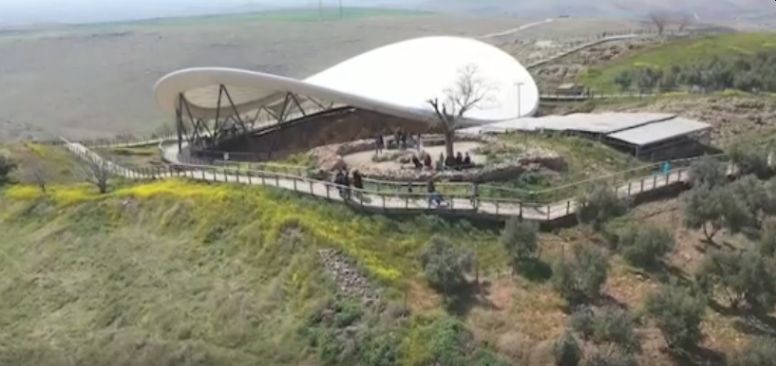
But as we already had seen earlier, despite
the fantasies of earlier writers about Archeology in Mesopotamia, it is
notoriously hard to find palaces in the usual sense of the word.
What furthermore was clear from what had
been found by early 2007 is that war did not become a constant of human life
after the adoption of farming; indeed, long periods exist in which it appears
to have been successfully abolished. Yet, it had a stubborn tendency to
reappear if only many generations later.
A mistake to begin answering such
questions by assuming that these ancient polities were simply archaic versions
of our modern states. As we know it today, the state results from a distinct
combination of elements – sovereignty, bureaucracy, and a competitive political
field – which has entirely separate origins. Our thought experiment showed how
those elements map directly onto primary forms of social power, which can
operate at any scale of human interaction, from the family or household up to
the Roman Empire or the super-kingdom Tawantinsuyu.
Sovereignty, bureaucracy, and politics are magnifications of elementary types
of domination, grounded in the use of violence, knowledge, and charisma.
·
Many smaller rectangular
buildings.
·
Quarries.
·
Stone-cut
cisterns from the Neolithic.
As pointed out at the time, the
mega-sites of Ukraine and adjoining regions were inhabited from roughly 4100 to
3300 BC, for something in the order of eight centuries, which is considerably
longer than most subsequent urban traditions. Why were they there at all? Like
Mesopotamia and the Indus valley, they appear to have been born of ecological
opportunism in the middle phase of the Holocene. Not
floodplain dynamics, in this case, but processes of soil formation on the
flatlands north of the Black Sea.
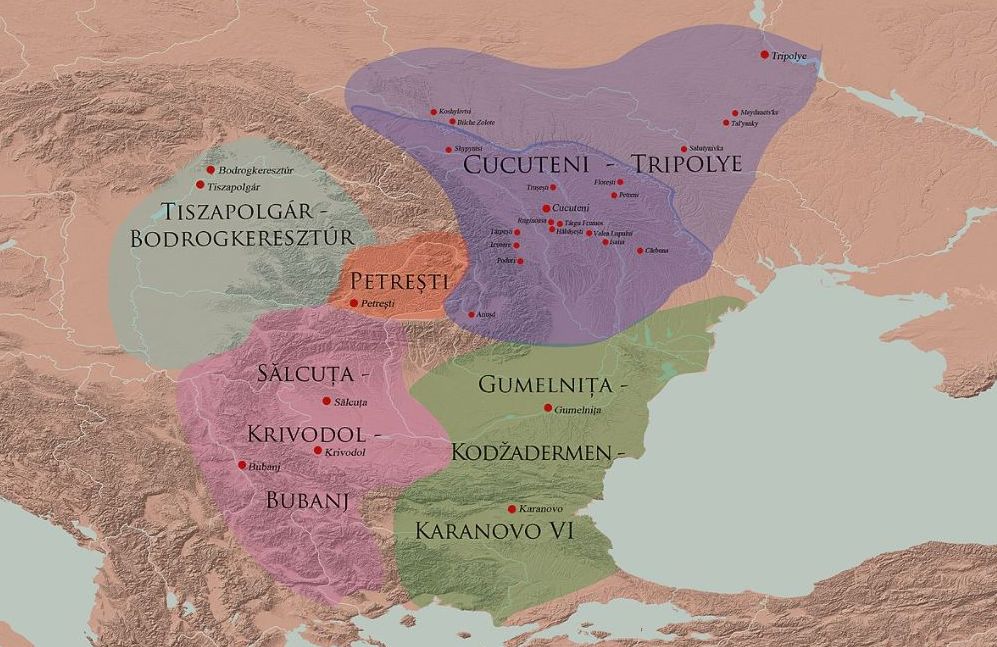
What was evident at the time was the
surprisingly common pattern of a dramatic increase in the scale of organized
human settlement taking place with no resulting concentration of wealth or
power in the hands of ruling elites. In short, archaeological research has
shifted the burden of proof onto those theorists who claim causal connections
between the origins of cities and what until then, if not also say today, was a common belief, the rise of stratified states.
Hence a dramatic increase in the scale
of organized human settlement took place with no resulting concentration of wealth
or power in the hands of ruling elites. In short, archaeological research has
shifted the burden of proof onto those theorists who claim causal connections
between the origins of cities and the rise of stratified states and whose
claims now look increasingly hollow.
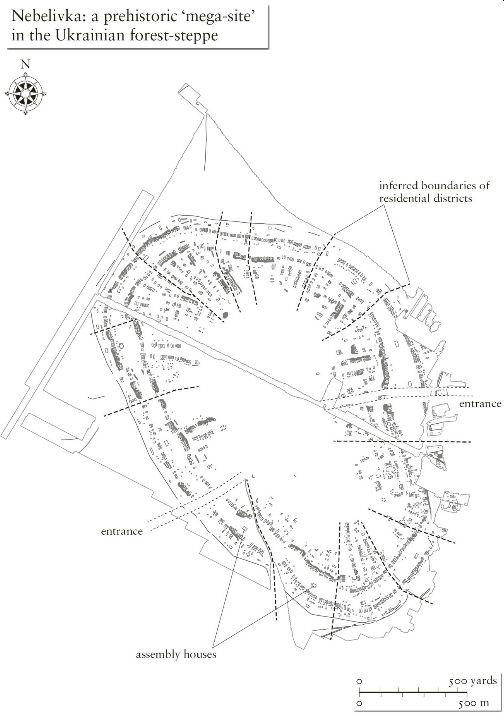
It seems unlikely that they did not have
their share of upheavals, transformations, and constitutional crises. In some cases,
we can be confident they did. At Mohenjo-Daro, for instance, we know that
roughly 200 years before the city’s demise, the Great Bath had already fallen
into disrepair. Industrial facilities and ordinary residences crept beyond the
Lower Town, onto the Upper Citadel, and even the site of the Bath itself.
Within the Lower Town, we now find
buildings of truly palatial dimensions with attached craft workshops.1 This
‘other’ Mohenjo-Daro existed for generations and seems to represent a
self-conscious project of transforming the city’s (by then centuries-old)
hierarchy into something else – though archaeologists have yet to fathom quite
what that other thing was supposed to be.2
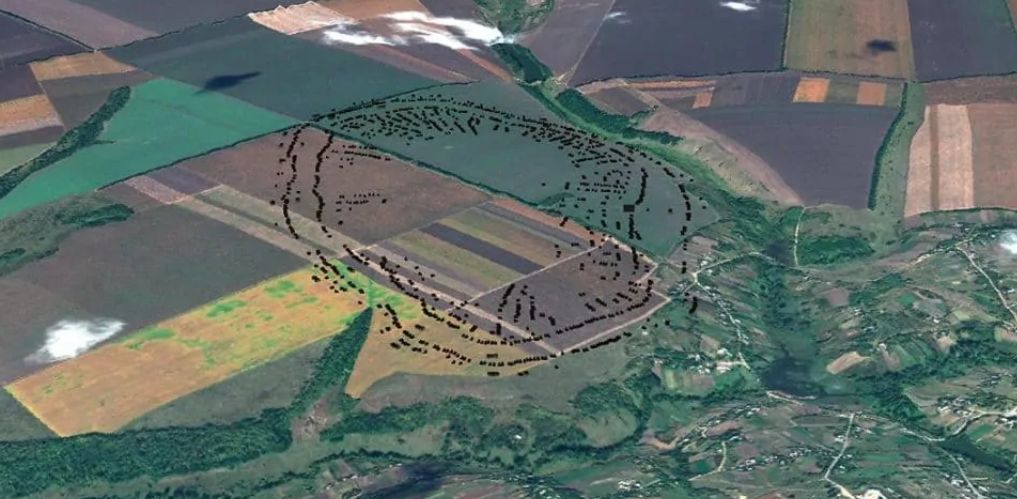
Like the
Ukrainian cities, those of the Indus were eventually abandoned entirely,
replaced by societies of much smaller scale where heroic aristocrats held sway.
In Mesopotamian cities, palaces finally appeared. Overall, history is
progressing in an authoritarian direction. By the time we have written records,
lords and kings and would-be world emperors have popped up almost everywhere.
Still, rushing to this conclusion would be unwise. Dramatic reversals have
sometimes taken place in the other direction – for instance, in
China.
In China, archaeology has opened a
yawning chasm between the birth of cities and the appearance of the earliest
named royal dynasty, the Shang. Since the early twentieth-century discovery of
inscribed oracle bones at Anyang in the north-central province of Henan,
political history in China has started with the Shang rulers, who came to power
around 1200 BC.3 Until quite recently, Shang civilization was thought to be a
fusion of earlier urban (‘Erligang’ and ‘Erlitou’) and aristocratic or ‘nomadic’ elements, the
latter taking the form of bronze casting techniques, new types of weaponry, and
horse-drawn chariots first developed on the Inner Asian steppe, home to a
series of powerful and highly mobile societies which played so much havoc with
later Chinese history.4
Before the Shang, nothing exciting was
supposed to have happened – just a few decades ago, textbooks on early China
presented a long series of ‘Neolithic’ cultures receding into the distant past,
defined by technological trends in farming and stylistic changes in regional
traditions of pottery and the design of ritual jades. The underlying assumption
was that these were pretty much the same as Neolithic farmers were imagined to
be anywhere else: living in villages, developing embryonic forms of social inequality,
preparing the way for the sudden leap that would bring the rise of cities and,
with cities, the first dynastic states and empires. But we now know this is not
what happened at all.
Today, archaeologists in China speak of
a ‘Late Neolithic’ or ‘Longshan’ period marked by what can be described,
without equivocation, like cities. By 2600 BC, we find a spread of settlements
surrounded by rammed earth walls across the entire valley of the Yellow River,
from the coastal margins of Shandong to the mountains of southern Shanxi. They
range in size from centers of more than 300 hectares to tiny principalities,
little more than villages but still fortified.5 The major demographic hubs lay
far away, on the lower reaches of the Yellow River to the east; also to the
west of Henan, in the Fen River valley of Shanxi province; and in the Liangzhu culture of southern Jiangsu and northern
Zhejiang.6
Many of the largest Neolithic cities
contain cemeteries, where individual burials hold tens or even hundreds of
carved ritual jades. These may be badges of office, or perhaps a form of ritual
currency: in ancestral rites, the stacking and combination of such jades, often
insignificant number, allowed rank differences to be measured along a standard
scale of value, spanning the living and the dead. Accommodating such finds in
the annals of written Chinese history proved an uncomfortable task since we are
speaking of a long and tumultuous epoch that just wasn’t supposed to have
happened.7
The problem is not merely one of time but
also of space. Astonishingly, some of the most striking ‘Neolithic’ leaps
towards urban life are now known to have taken place in the far north, on the
frontier with Mongolia. From the perspective of later Chinese empires (and the
historians who described them), these regions were already halfway to ‘nomad
barbarian and would eventually go beyond the Great Wall. Nobody expected
archaeologists to find there, of all places, a 4,000-year-old city, extending
over 400 hectares, with a great stone wall enclosing palaces and a
step-pyramid, lording it over a subservient rural hinterland nearly 1,000 years
pre-Shang.
The excavations at Shimao, on the Tuwei
River, have revealed all this, along with abundant evidence for sophisticated
crafts – including bone-working and bronze-casting – and warfare, including the
mass killing and burial of captives, in around 2000 BC.8 Here, we sense a much
livelier political scene than was ever imagined in the annals of later courtly
tradition. Some of it had a grisly aspect, including the decapitation of
captured foes and the burial of some thousands of ancestral jade axes and scepters
in cracks between great stone blocks of the city wall, not to be found or seen
again until the prying eyes of archaeologists uncovered them over four
millennia later. All this likely intention was to disrupt, demoralize, and
delegitimize rival lineages (‘all in all, you’re just another jade in the
wall’).
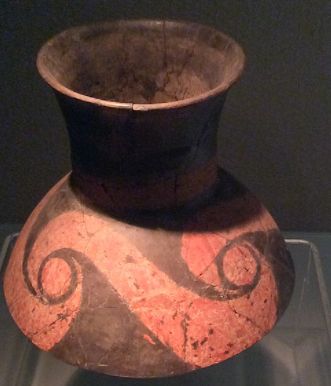
At the site of Taosi
– contemporary with Shimao, but located far to the south in the Jinnan basin – we find a rather different story. Between
2300 and 1800 BC, Taosi went through three phases of
expansion. First, a fortified town of sixty hectares arose on the ruins of a
village, expanding subsequently to a city of 300 hectares. In these early and
middle periods, Taosi presents evidence for social
stratification almost as dramatic as what we see at Shimao, or indeed what we
might expect of a later imperial Chinese capital. There were massive enclosure
walls, road systems, and large, protected storage areas; rigid segregation
between commoner and elite quarters, with craft workshops and a calendrical
monument clustered around what was most likely some palace.
Taosi contained an astronomical observatory, the oldest in
East Asia. Archaeologists discovered a Middle Taosi
period semi-round foundation just beside the southern wall of the Middle Taosi enclosure, which could be used for astronomical
observations. The structure consists of an outer semi-ring-shaped path and a
semi-round rammed-earth platform with about 60 m. The platform is 42m in
diameter and over 1000 sq m in area. Map of the Observatory at Taosi:
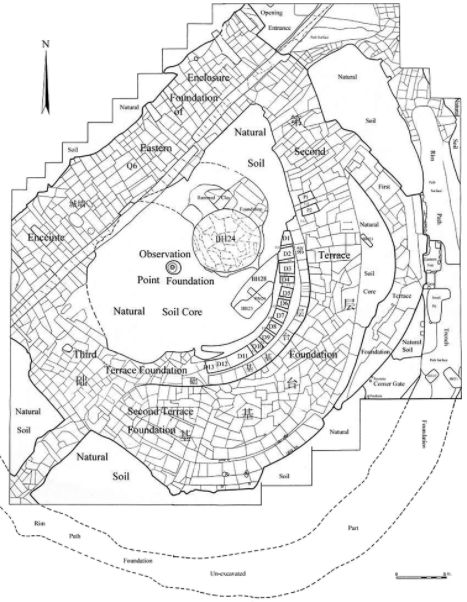
Burials in the early town cemetery of Taosi fell into clearly distinct social classes. Commoner
tombs were modest; elite tombs were full of hundreds of lacquered vessels,
ceremonial jade axes, and remains of extravagant pork feasts. Then suddenly,
around 2000 BC, everything seems to change. As the excavator describes it:
The city wall was razed flat, and the
original functional divisions were destroyed, resulting in a lack of spatial
regulation. Commoners’ residential areas now covered almost the entire site,
even reaching beyond the boundaries of the middle-period large city wall. The
size of the city became even larger, reaching a total area of 300 hectares. In
addition, the ritual area in the south was abandoned. The former palace area
now included a poor-quality rammed-earth foundation of about 2,000 square
meters, surrounded by trash pits used by relatively low-status people. Stone
tool workshops occupied what had been the lower-level elite residential area.
The city had lost its status as a capital and was in a state of anarchy.9
What’s more, there are clues that this
was a conscious process of transformation, most likely involving a significant
degree of violence. Commoner graves burst in on the elite cemetery. In the
palace district, a mass burial, with signs of torture and grotesque violations
of the corpses, appears to be evidence for what the excavator describes as an
‘act of political retribution.
It is considered wrong to question an
excavator’s first-hand judgment about a site, but we cannot resist a couple of
observations. First, the ostensible ‘state of anarchy’ (elsewhere described as
‘collapse and chaos’) lasted for a considerable period, between two and three
centuries. Second, the overall size of Taosi during
the latter period grew from 280 to 300 hectares. This sounds a lot less like
collapse than the age of widespread prosperity following the abolition of a
rigid class system. It suggests that after the palace’s destruction, people did not fall into a Hobbesian ’war of all
against all’ but got on with their lives – presumably under what they
considered a more equitable system of local self-governance.
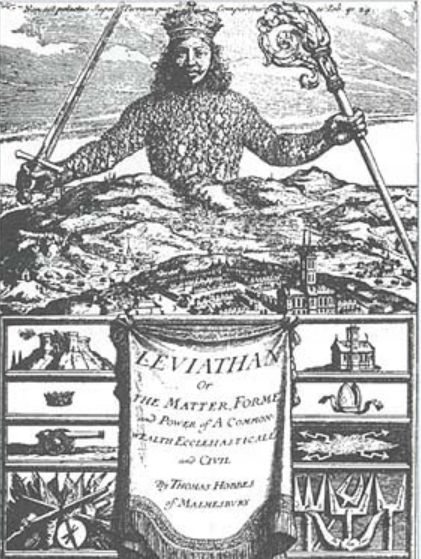
Here, on the banks of the Fen River, we
might conceivably be in the presence of evidence for the world’s first documented
social revolution, or at least the first in an urban setting. Other
interpretations are no doubt possible. But at the very least, the case of Taosi invites us to consider the world’s earliest cities as
places of self-conscious social experimentation, where very different visions
of what a city could be like might clash – sometimes peacefully, sometimes
erupting in bursts of extraordinary violence. Increasing the number of people
living in one place may vastly increase the range of social possibilities, but
in no sense does it predetermine which of those possibilities will ultimately
be realized.
Yet – urban revolutions of the political
kind – may well be a lot more common in human history than we tend to think.
Again, we may never be able fully to reconstruct the unwritten constitutions of
the earliest cities to appear in various parts of the world, or the reforms
underwent in their first centuries. Still, we can no longer doubt that these
existed.
In the case of W.Europe
Harald Haarmann in his 2011 published book titled: Das Rätsel der Donauzivilisation –
Die Entdeckung der ältesten
Hochkultur writes that there had been
contact and circulation over the still intact isthmus between Europe and Asia
Minor.
Haarmann is in favor of the idea that
the contacts between the expanding Neolithic farmers and the local Mesolithics were dominantly peaceful which would
account for the fact that the spreading of the agrarian know-how could be done
by colonization proper as well as by transfer of ideas.
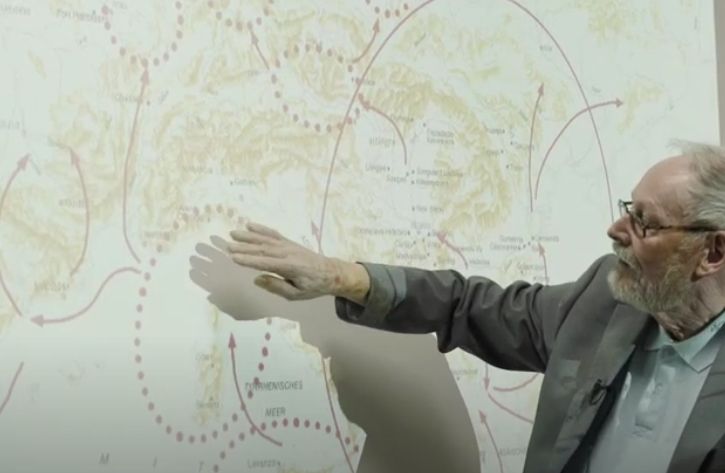
Analysis of the proportion of immature
skeletons recovered from European prehistoric cemeteries has shown that the transition to
agriculture after 9000 BC triggered a long-term increase in human
fertility.
On the Black sea shore between Varna and
Danube delta and the eastern Balkan mountain, the region
flourished economically during the second half of the fifth millennium BC,
based on metallurgical development and intense commercial relationships.
The lake settlements around Varna lake
were the center of the region. The tombs in the Varna necropolis illustrate
various social differences in material terms of buried people. Most probably
this is due to the rise of social classes among the local population.

The “Varna gold,” as it’s known among
archaeologists, has upended long-held notions about prehistoric societies.
According to radiocarbon dating, the artifacts from the cemetery are 6,500
years old, meaning they were created only a few centuries after the first
migrant farmers moved into Europe. Yet archaeologists found
the riches in just a handful of graves, making them the first evidence of
social hierarchies in the historical record.
1. On this, see Gregory L. Possehl, The
Indus Civilization: A Contemporary Perspective, 2002, and M. Vidale, ‘Aspects
of Palace life at Mohenjo-Daro.’ South Asian Studies 26 (1):
59–76, 2010.
2. Independent cities were only entirely
abolished in Europe in the seventeenth and eighteenth centuries, as part of the
creation of the modern nation state. European empires, and the creation of the
modern interstate system in the twentieth century, succeeded in wiping out any
traces of them in other parts of the world.
3. Robert Bagley, ‘Shang
archaeology.’ In Loewe and Shaughnessy (eds),1999, pp. 124–231.
4. See Kyle Steinke and Dora C. Y.
Ching (eds). Art and Archaeology of the Erligang
Civilization. Princeton, NJ: Princeton University Press. 2014.
5. As described by Li Liu, The
Archaeology of China: From The Late Paleolithic To The Early Bronze Age
(Cambridge World Archaeology), 2012, p. 222, Liu also points out
that some of the smallest are in Henan itself, the heartland of the later
named dynasties. The town of Wangchenggang,
associated with the Xia Dynasty – the
semi-legendary precursor to the Shang – has a total walled area of around
thirty hectares.
6. Colin Renfrew and Bin Liu, The
emergence of complex society in China: the case of Liangzhu,
2018, see also the
case of Liangzhu.’ Antiquity 92 (364): 975–90.
7. Kwang-chih
Chang, 1999 ‘China on the eve of the historical period.’ In
Loewe and Shaughnessy (eds),1999, pp. 37–73 They also
describe how some scholars initially suggested that the Longshan period
was an age of high shamanism, an appeal to the later myth of Pan Gu, who prised heaven and earth apart in such a way that only those
with spiritual powers could journey between them. Others at first related it to
classical legends of wan guo, the period of Ten Thousand States before power was localized to
the Xia, Shang, and Zhou dynasties.
8. See Jaang et al. 2018.
9. Nu He, ‘The Longshan period site
of Taosi in Southern Shanxi Province.’ In A. P.
Underhill (ed.), A Companion to Chinese Archaeology. Chichester: Wiley, 2013,
pp. 255–78, 269.
For updates click homepage here